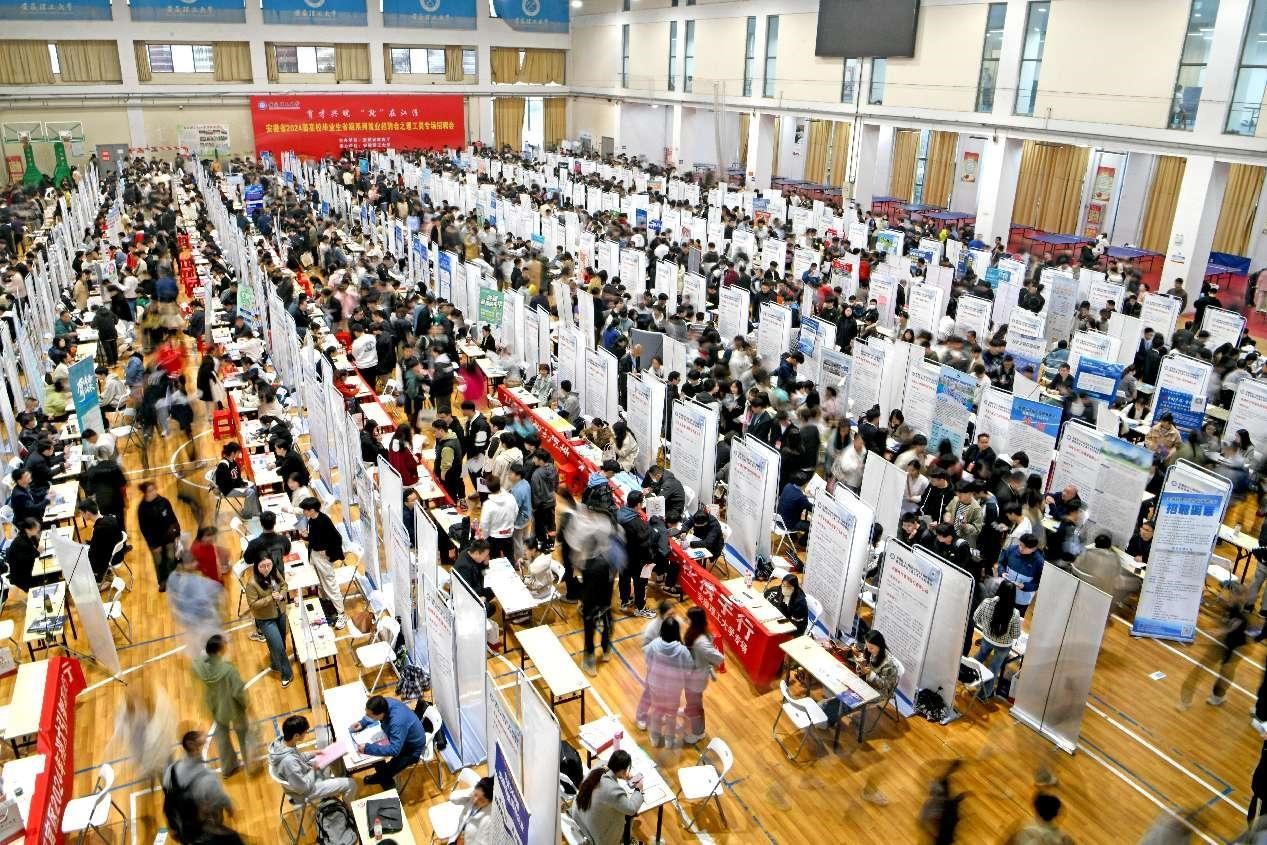China's demographic dividend is turning into talent dividend
Time:2024-04-30 05:59:09 Source:styleViews(143)
With over five million students graduating in science, technology, engineering, and mathematics (STEM) each year, China has become the world's leading producer of STEM graduates.
According to global think tanks, approximately 50 percent of the world's leading artificial intelligence (AI) researchers are trained in Chinese universities, making China the top provider of elite AI talents globally.

An R&D staff of a new material company in Jiujiang, east China's Jiangxi province, works in a lab of the company. (People's Daily Online/Wu Jiang)
Behind these numbers lies China's transition from demographic dividend to talent dividend. After years of efforts, the average duration of education for China's working-age population has steadily increased to 11.05 years. The country now ranks first in the world in terms of the size of talent pool, human resources in science and technology and the total number of researchers.
Such growing talent dividend has provided strong support for technological advancements and industrial transformation and upgrading, bolstering the world's second-largest economy's confidence in future development.
Prioritizing talent as its main resource, China is committed to building a leading country in education. By recognizing the importance of STEM education in nurturing innovative and versatile talents and maximizing the potential of human resources, new achievements have been made in this regard.
From 2012 to 2022, the Chinese government's budget spending on education increased from 2.2 trillion yuan ($304.13 billion) to 4.85 trillion yuan, with an average annual growth of 8.23 percent. China now has a nearly 900 million working-age population, and the average years of education for the newly added workforce has risen to 14 years.
Besides, China boasts 3,074 higher-educational institutions, with a student enrollment of over 47.63 million in various types of higher education. Home to over 200 million skilled workers, including more than 60 million high-skilled professionals, China has emerged as a country with the world's largest number of talents specialized in a diverse range of industries.

A job fair for students majoring in science, technology, engineering, and mathematics (STEM) was held at Anhui University of Science and Technology in Huainan, east China's Anhui province, March 23, 2024. (People's Daily Online/Chen Bin)
Research shows that in developing countries, the number of high-level talents, the overall quality of the talent pool, and the innovation vitality of talents collectively serve as a valuable resource for achieving leapfrog development. It is heartening to see these positive outcomes taking shape in China.
In recent years, multiple breakthroughs have been made in quantum computing in China, such as developing China’s first quantum computing measurement and control system, first quantum computer operating system, and first quantum chip design software, largely due to the efforts of a research team led by Guo Guoping, deputy director of the Key Laboratory of Quantum Information of the Chinese Academy of Sciences. These achievements have made China the third country in the world with the ability to deliver a complete quantum computer.
China now leads the world with over 6 million R&D personnel, and maintains the second position globally in R&D investment for multiple years.
Japanese magazine Nikkei Asia said on its website that it is easy these days to construct a bearish view on China's economic outlook. But a frequent omission from such narratives is the country's zeal for innovation.
China's expanding investment in innovation is playing a crucial role in boosting productivity and fostering long-term, sustainable economic growth. According to the World Bank, human capital has contributed over 36 percent to China's economic growth, and the number is still on a rise.

A researcher debugs an intelligent quality check device for smart terminals at the Yibin Research Institute of University of Electronic Science and Technology of China, southwest China's Sichuan province. (People's Daily Online/Wang Yu)
International institutions and companies are increasingly drawn to China's human capital potential and seeking to tap into the country's talent dividend.
Schneider Electric, a multinational based in France, has been making quick advances in China in 2023, launching a new R&D project approximately every two months. China has now become one of the company's four R&D bases in the world.
Why does Schneider Electric frequently expand its R&D presence in China? One key reason is China's advantage in talent. According to Yin Zheng, executive vice president of Schneider Electric's China & East Asia Operations, the company has been continuously strengthening its local innovation team. Over the past three years, its number of R&D staff in China has grown by 30 percent, surpassing 2,000 individuals.
"We will continue to reinforce our R&D capabilities in China, establish more research institutions, promote innovation to support China in developing new quality productive forces, and share 'Chinese wisdom' with the rest of the world," said Yin.
Jiang Hao, vice president of Roland Berger Greater China, said in recent years, foreign companies have been rapidly setting up R&D centers in China. "The large number of exceptional management talents and skilled engineers in China has caught the attention of foreign companies, leading to a rise in investment toward building R&D centers in the county," said Jiang.
Previous:Xi congratulates Aliyev on re
Next:Xi Focus: Top
You may also like
- China urges U.S. to cease sending wrong signals to "Taiwan independence" forces
- VOX POPULI: LDP’s Nikai’s ‘expenditures’ on books must make libraries weep
- VOX POPULI: Like Nobita in ‘Doraemon,’ we should never give up on ourselves
- Offering a chair to older colleague at work could count as age discrimination, judge rules
- Effective diplomacy in black and white
- It's about to get more difficult for Americans to visit Brazil
- 'Barbie' makes history with $1 billion at the box office
- VOX POPULI: The war in Ukraine enters its 3rd year with no end in sight
- China completes major tasks in three